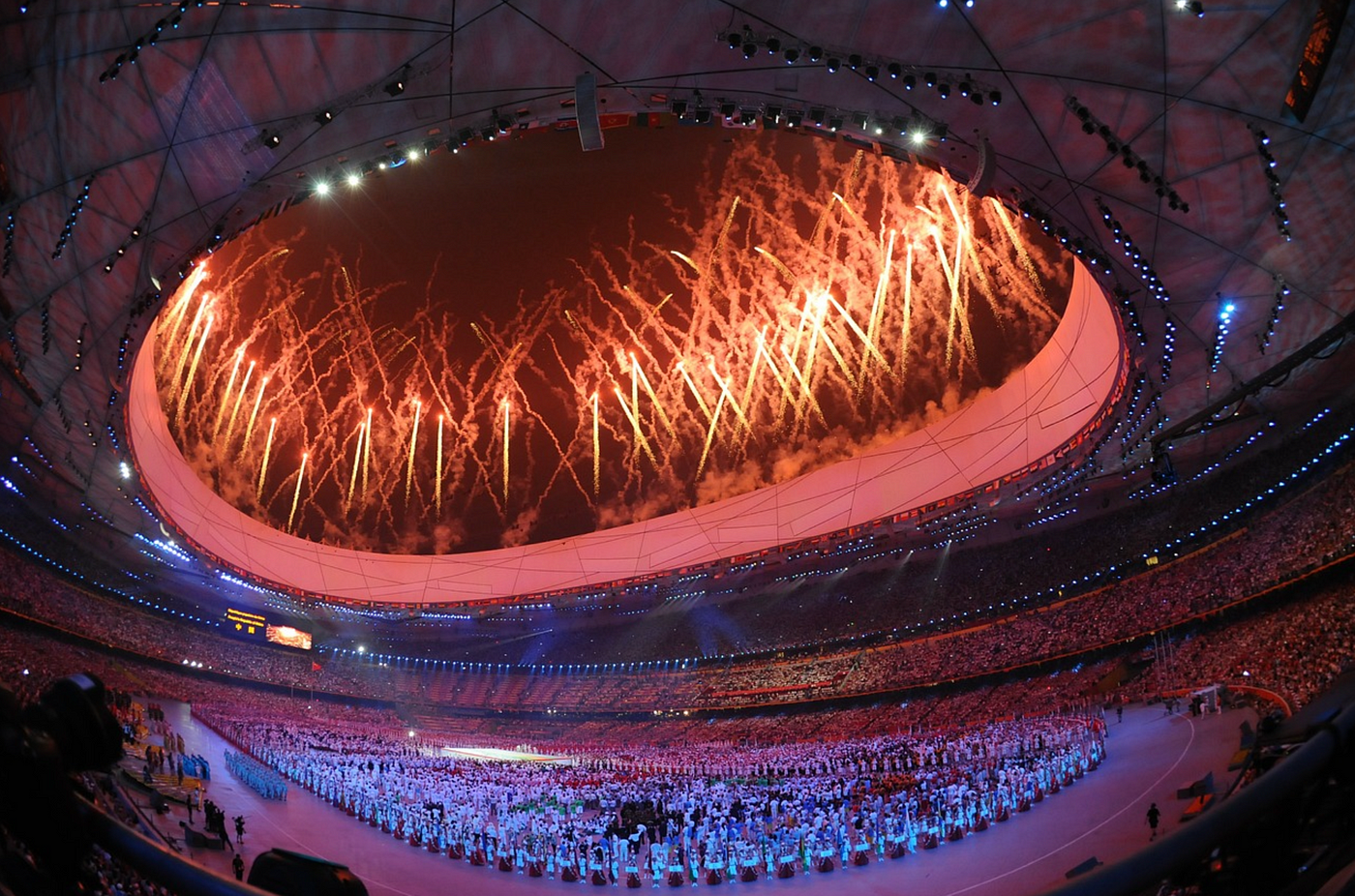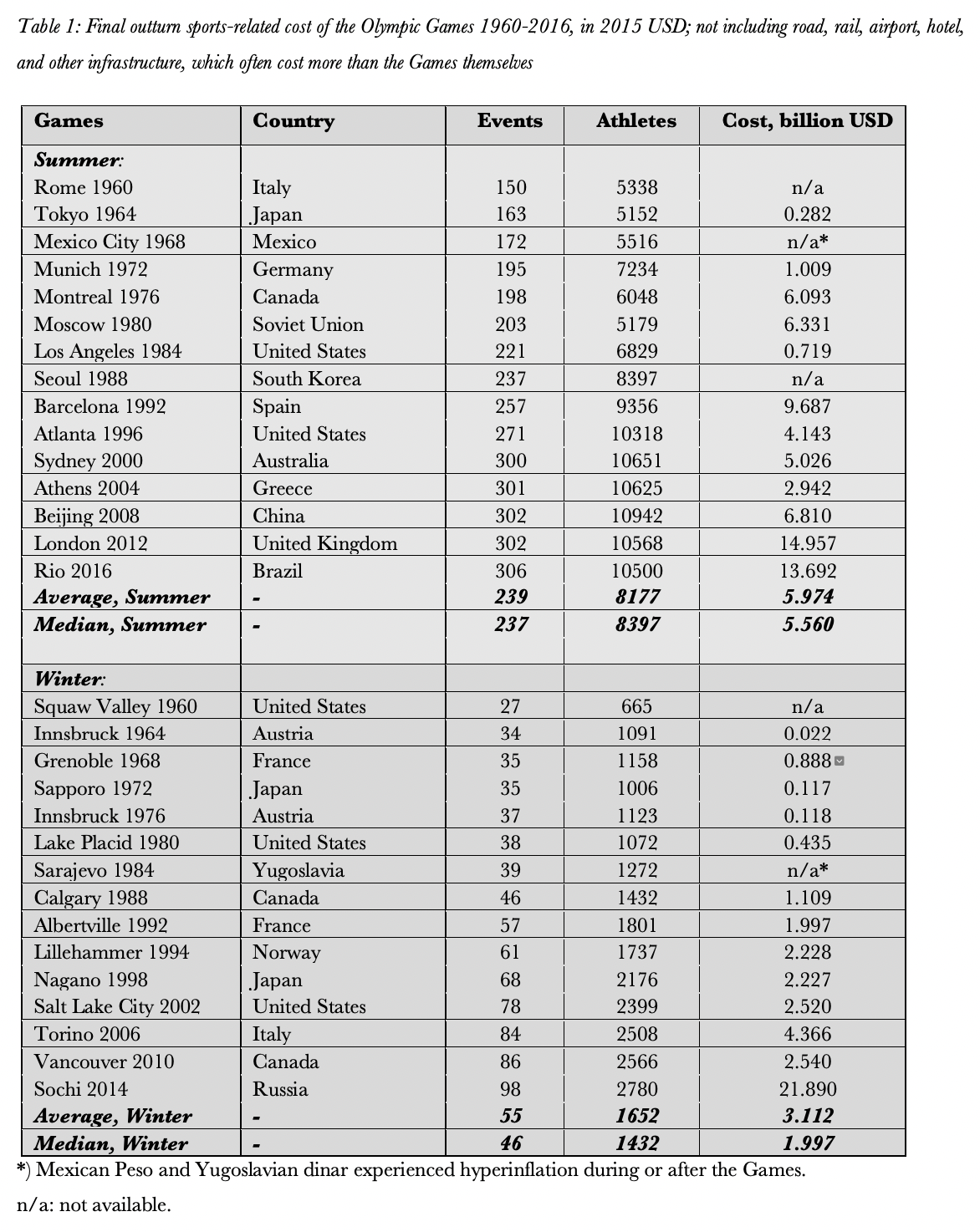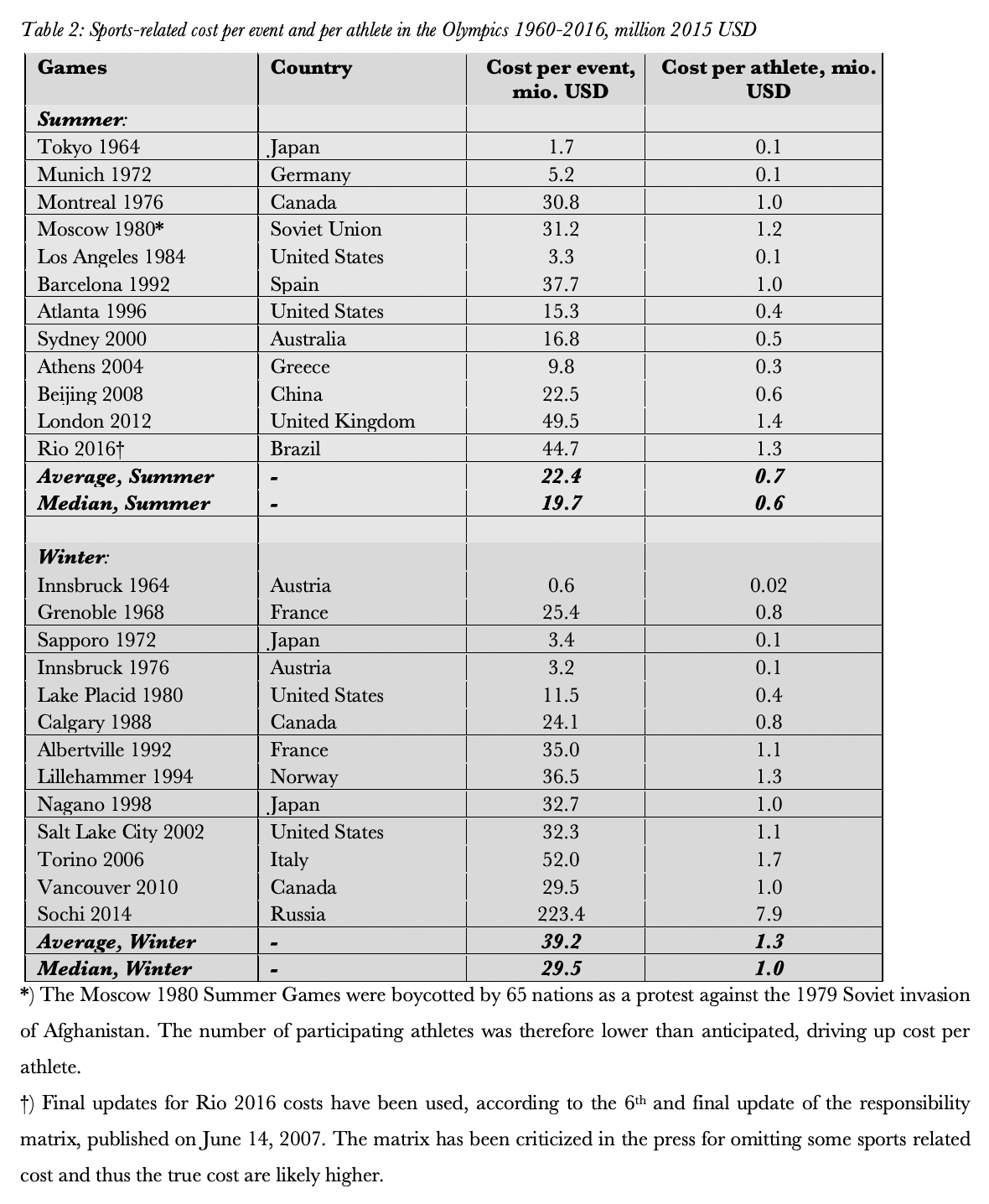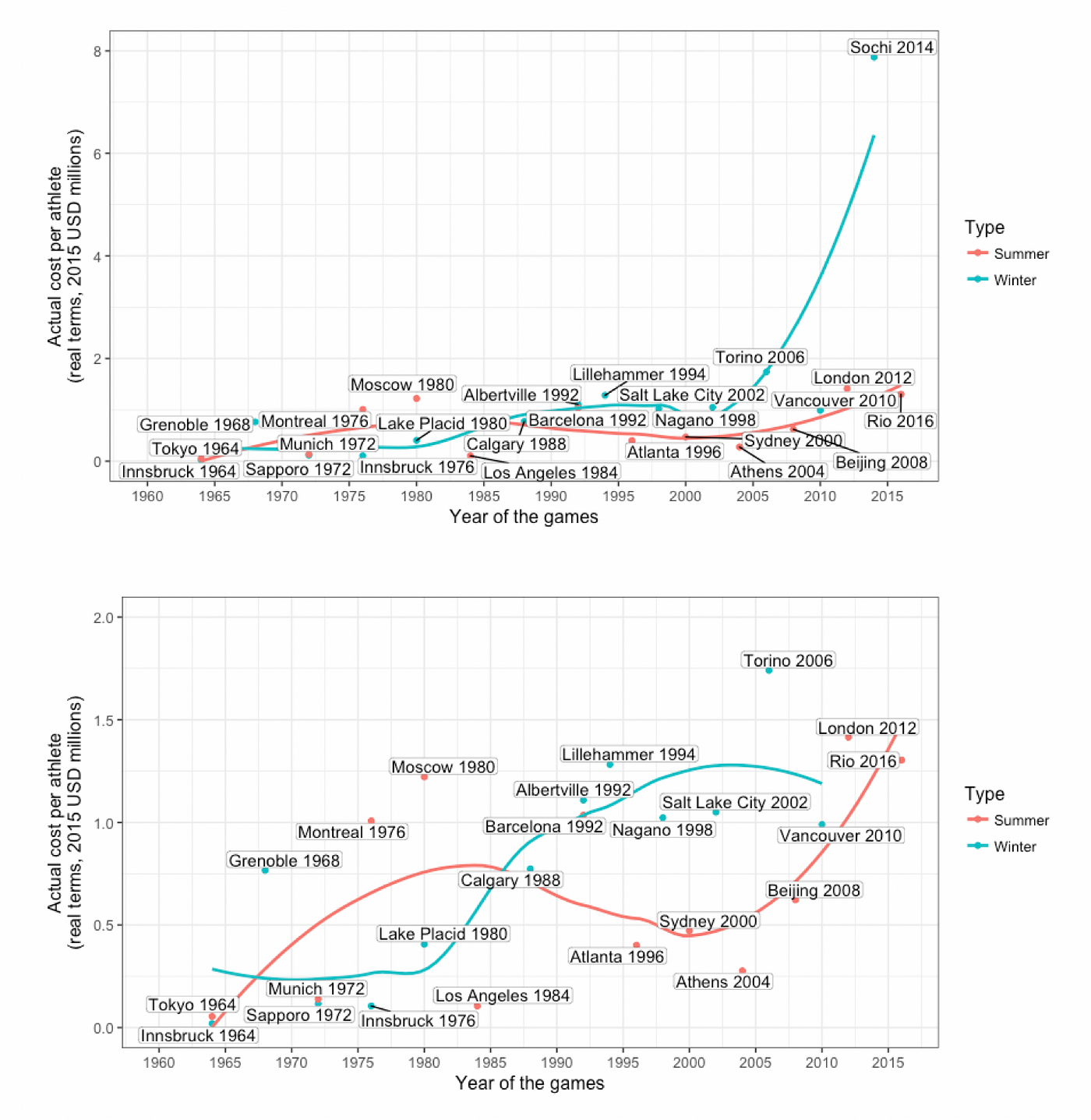How Much Does It Cost to Compete in the Olympics
How Much Do the Olympics Cost?
The most expensive Games to date are Sochi 2014. Tokyo 2020 are set to change this
![]()
With Alexander Budzier and Daniel Lunn

Actual sports-related costs of the Olympic Games 1960–2016 are shown in Table 1 below, together with the number of events and number of athletes in each Games. Data on outturn cost were available for 25 out of the 30 Games 1960–2016. It should be mentioned that the Rio 2016 Summer Games had not yet been held at the time of compiling the table. Preliminary data were therefore used for these Games.*

The most expensive Summer Games to date are London 2012 at USD 15.0 billion. The most expensive Winter Games, Sochi 2014 at USD 21.9 billion
The most expensive Summ e r Games to date are London 2012 at USD 15.0 billion and Barcelona 1992 at USD 9.7 billion. For the Winter Games, Sochi 2014 is the most costly at USD 21.9 billion; Torino 2006 is the second-most costly at USD 4.4 billion. The least costly Summer Games are Tokyo 1964 at USD 282 million; the least costly Winter Games, Innsbruck 1964 at USD 22 million. It must be mentioned that wider capital costs for urban and transportation infrastructure are not included in these numbers and that such costs are typically substantial.
Average cost for Summer Games 1960–2016 is USD 6.0 billion. Average cost for Winter Games over the same period is US 3.1 billion. The large difference between average and median cost for the Winter Games is mainly caused by the outlier of Sochi 2014 at USD 21.9 billion. Indeed, the Sochi 2014 Winter Olympics are the most costly Games ever, even when compared with the Summer Games. This is extraordinary, given the fact that cost for the Winter Games is typically much lower than for the Summer Games, with the median cost for Winter Games being less than half the median cost for Summer Games.
Cost for the Winter Games is typically much lower than for the Summer Games, with the median cost for Winter Games being less than half the median cost for Summer Games
Figure 1 shows the development of cost 1960–2016. The trend lines indicate that the cost of the Games have increased over time. However, the apparent increase is statistically non-significant. In statistical terms, therefore, we can argue for neither an increase or a decrease in cost over time, which might change with Tokyo 2020 looking to become the most expensive Games ever..
Figure 1: Time series for Olympics costs 1960–2016

Table 2 shows cost per event and cost per athlete 1960–2016 in 2015 USD. These data were available for 25 of the 30 Games 1960–2016. The average cost per event for the Summer Games is USD 22.4 million (median USD 19.7 million). For the Winter Games it is USD 39.2 million (median USD 29.5 million). — The highest cost per event in the Summer Games was found for London 2012 at USD 49.5 million followed by Barcelona at USD 37.7 million. For the Winter Games, the highest cost per event was found for Sochi at USD 223.4 million followed by Torino 2006 at USD 52.0 million. Again we see that Sochi 2014 is an outlier. The lowest cost per event was found for Tokyo 1964 at USD 1.7 million for the Summer games and Innsbruck 1964 at USD 0.6 million for the Winter Games.

For cost per athlete, we found the Winter Games to be approximately twice as costly as the Summer Games. The average cost per athlete is USD 700,000 for the Summer Games (median USD 600,000) and USD 1.3 million for the Winter Games (median USD 1.0 million). However, the difference is statistically non-significant. The highest cost per athlete in the Summer Games was found for London 2012 at USD 1.4 million, followed by Moscow 1980 at USD 1.2 million. For the Winter Games, the highest cost per athlete was found for Sochi 2014 at USD 7.9 million and Torino 2006 at USD 1.7 million. The lowest cost per athlete in the Summer Games was found for Tokyo 1964 at USD 55,000, and in the Winter Games for Innsbruck 1964 at USD 20,000.
The highest cost per athlete in the Summer Games was London 2012 at USD 1.4 million. For the Winter Games, it was Sochi 2014 at USD 7.9 million per athlete
Figure 2 shows the correlation of cost per athlete with time. We see a shift in trend from cost per athlete being generally higher for the Summer than for the Winter Games until the mid 1980's, after which the Winter Games become more costly than the Summer Games, in terms of cost per athlete. We also see that cost per athlete was generally decreasing for the Summer Games from the mid-1980's until the early noughties, after which cost per athlete has been increasing for both the Summer and Winter Games, driven mainly by London 2012 and Sochi 2014. Overall, however, the changes over time are statistically non-significant for both Summer Games, Winter Games, and all Games.
Figure 2: Time series of sports-related cost per athlete for Olympics 1960–2016, with and without Sochi 2014 as outlier

— — — —
*) For the full story, including references and notes, see Flyvbjerg, Bent, Alexander Budzier, and Daniel Lunn, 2021, "Regression to the Tail: Why the Olympics Blow Up," Environment and Planning A: Economy and Space, vol. 53, no. 2, pp. 233–260. Free pdf here: https://bit.ly/2ZBaQSI
How Much Does It Cost to Compete in the Olympics
Source: https://towardsdatascience.com/how-much-do-the-olympics-cost-ef0170bc71f7#:~:text=The%20average%20cost%20per%20athlete,(median%20USD%201.0%20million).
0 Response to "How Much Does It Cost to Compete in the Olympics"
Post a Comment